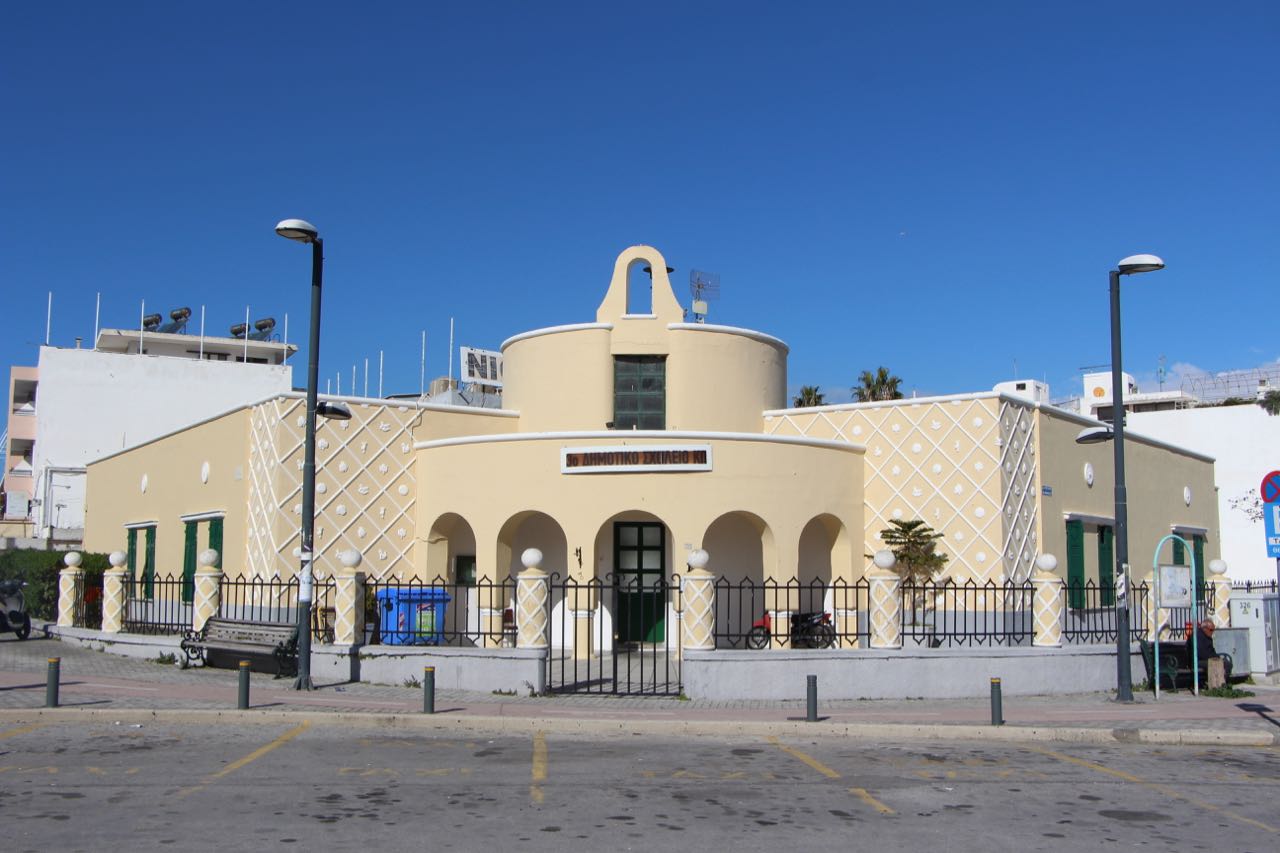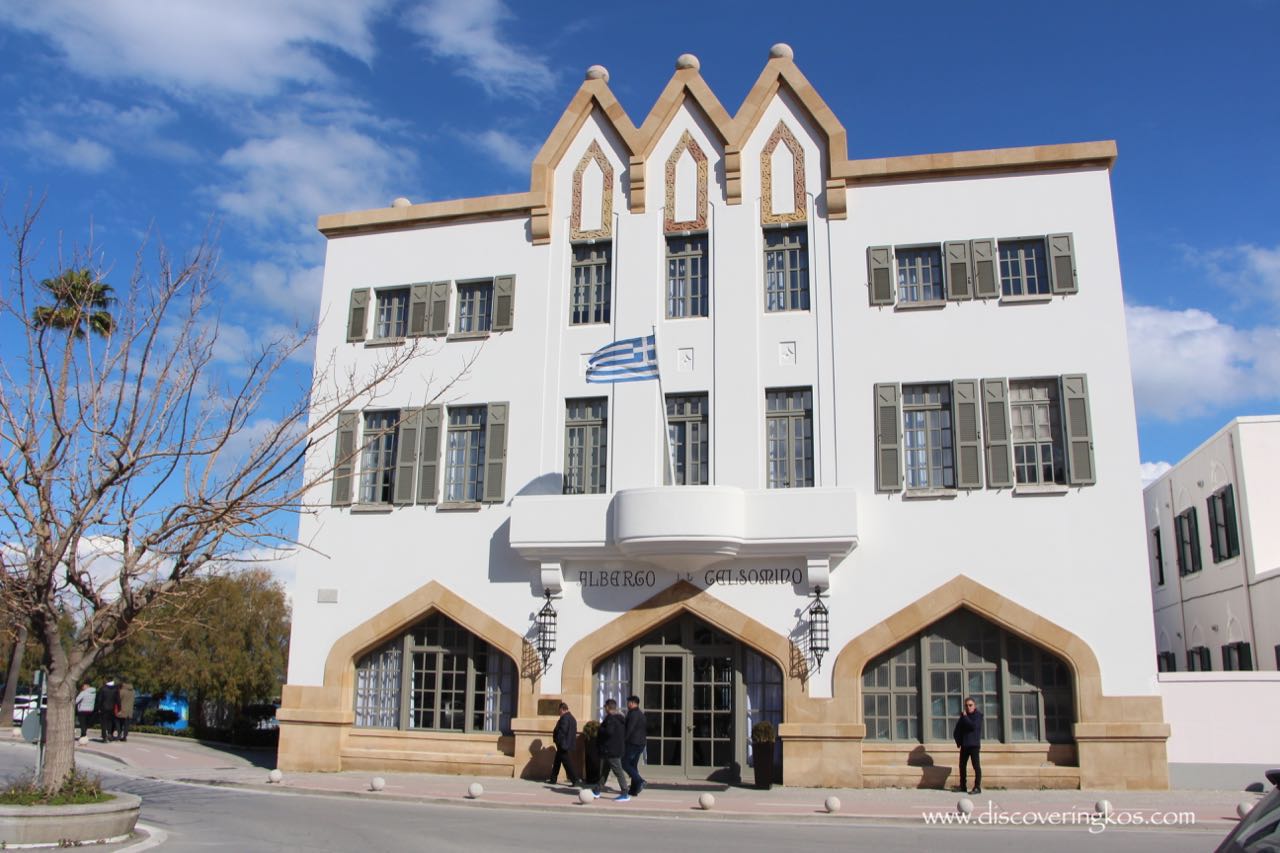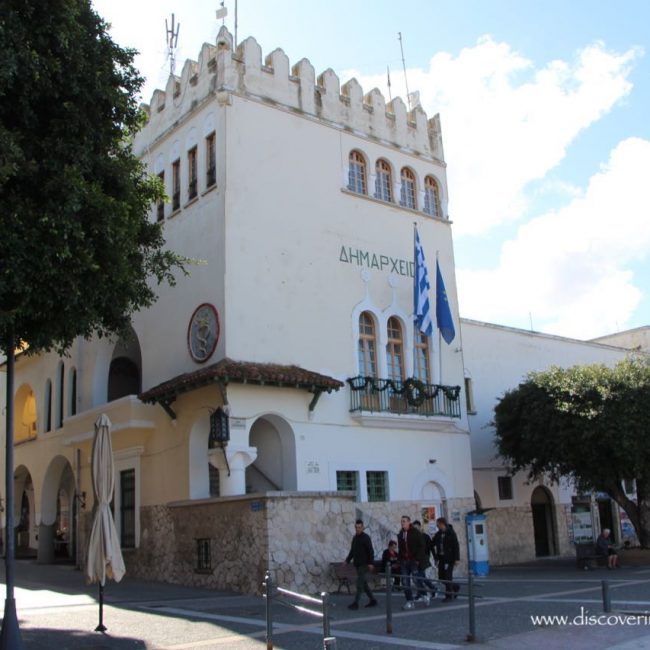The Electricity Company Building
Historical Background:
The electricity company building in Kos, known locally as the Public Power Company or DEH (ΔΕΗ) in Greek, has a rich history dating back to the early 20th century. Established as a branch of the Italian monopoly S.I.E.R. (Società Industrie Elettriche Rodi) in the Dodecanese, the facility was developed between 1926 and 1928. During this period, the Italian administration sought to modernize the infrastructure of the islands, addressing both energy and telephone requirements.
Site Selection and Construction:
The facility was strategically located in an area formerly used as a Muslim cemetery. This site was repurposed to house the new industrial facility, situated at the boundary of the “Industrial District of Kurm-Burnu” on the north-western side of the medieval port of Kos Town. This location was chosen to leverage the proximity to the port and to integrate seamlessly into the existing urban fabric.
Architectural Significance:
The industrial building constructed during the Italian occupation era is notable for its architectural design. It incorporates elements borrowed from the nearby fortress of Neratzia, directly across from the facility. This borrowing of architectural motifs creates a visual and historical link between the two structures, blending industrial functionality with historical aesthetics. The building’s design reflects the Italian penchant for integrating modern industrial structures with the local architectural heritage.
Role and Evolution:
Initially, the building served as the administrative offices for the Public Power Company (PPC), managing the local energy supply and telecommunications. Over the years, it has continued to play a central role in the island’s infrastructure development and energy management.
Heritage Status:
Recognizing its historical and architectural value, the electricity company building has been declared a heritage site. This designation helps preserve its unique character and ensures that the building remains a protected landmark within Kos. The heritage status also highlights the importance of the site in the broader historical narrative of the island, acknowledging its role in the modernization efforts during the Italian occupation and its ongoing significance.
Current Use and Preservation:
Today, the building continues to house the administration offices of the Public Power Company, maintaining its original function while also serving as a historical monument. Efforts to preserve and maintain the structure ensure that it remains a testament to the industrial and architectural advancements of the early 20th century on Kos.
Conclusion:
The electricity company building in Kos is a remarkable example of how industrial architecture can be seamlessly integrated into a historical context. Its design, influenced by the nearby fortress of Neratzia, and its ongoing function as an administrative center, make it a significant landmark on the island. As a declared heritage site, it stands as a reminder of the island’s history during the Italian occupation and its journey towards modernization.














